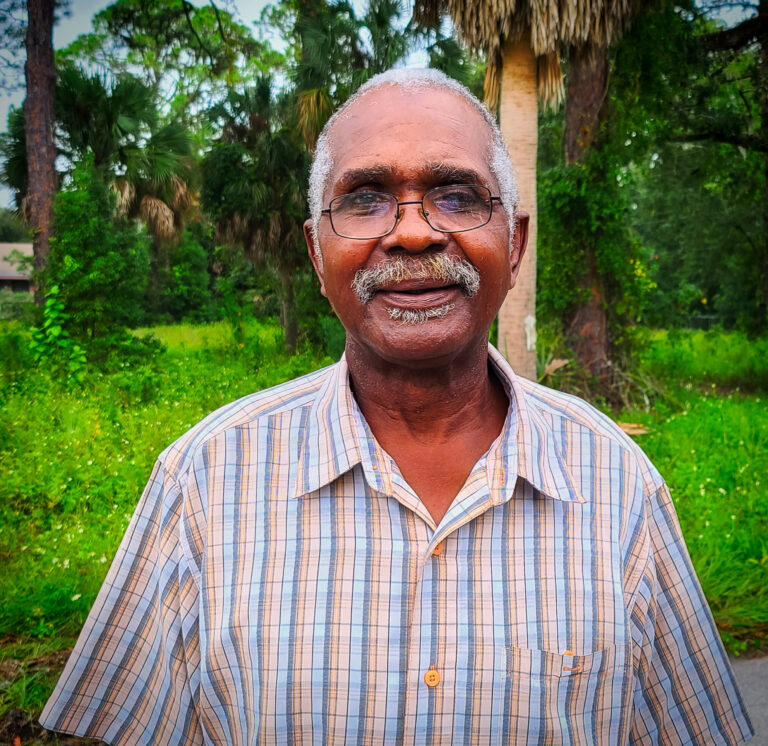Legacy Post Disclaimer
This is a #Legacy post imported from The Apalachicola Time’s previous platform. If you’re experiencing issues with this article, please email us at news@nevespublishing.com.
Invaders plague Panhandle
Norton Kilbourn and Ellie Tullis did something they didn’t relish doing, snatching a frog off the porch of their Apalachicola home and putting it in their freezer to slowly and humanely euthanize her.
“Poor thing,” wrote Tullis. “She was trying to sleep and part of me feels sad and somewhat guilty but we cannot let them get established if at all possible. It would devastate the ecosystem.”
That position is the view of frog expert Dr. Steve Johnson, a tenured faculty member in the University of Florida’s Department of Wildlife Ecology and Conservation, who has worked extensively with imperiled species.
He is spreading the word that the Cuban tree frog has gradually expanded its reach from its former territory in South and Central Florida, and that it is important to stop them before they devastate native species.
“They’re becoming entrenched in the Panhandle,” he said, in a telephone interview from his Gainesville lab. “This has only been in the past four to five years; they have not been up here until recently.
“They eat our native frogs and I am an advocate of our native frogs,” he said. “When they appear the natives tend to decline and sometimes disappear.”
The professor said the frogs first started appearing about three or four years ago in larger cities, including Pensacola, Panama City, Tallahassee and Jacksonville, and are continuing to spread, because they are fond of human-modified habitation.
“They will breed in small, isolated bodies of water, like birdbaths, ponds and solution holes in limestone,” Johnson said. “People create those habitats.”
The threat to native frogs is but one problem with the Cuban tree frogs, as their size has also created other problems.
“Sometimes they get in people’s homes and show up in the toilet,” Johnson said. “They can be three to four inches long and create big poop that can create an insightly mess.
“Their call can be loud and annoying,” he said. “They occasionally get into power (sources and create) outages and I’ve heard of them getting in someone’s air conditioner and causing a short circuit.”
The problem can be identifying them, as they can vary in colors. “Usually they have individual warts on their backs, and their eyes are quite large. Their toe pads are larger than native frogs,” said Johnson. “They look most like the gray tree frog, but the gray have a light colored blotch before each eye that the Cubans do not have.
The professor is asking that people send him a photo for identification to tadpole@ufl.edu.
Johnson said he recognizes that some people may be squeamish about trapping the frogs, especially since people must wash their hands thoroughly after handling them because the frog’s secretion can be irritating to the mucous membrane. “It’s not pleasant, it’s very uncomfortable,” he said.
He urged homeowners to remove opportunities for breeding. “Make sure you don’t have standing water around and maintain your pool promptly,” Johnson said. “If everyone does their little bits there can be impacts.
“Get the neighborhood kids to go out and catch them,” he said.
Johnson said he has some admiration for the Cuban tree frogs.
“It’s not their fault they’re here. I got to admire that they’re survivors and adaptable,” Johnson said. “Are we ever going to get rid of them? No, they’re too pervasive. It’s a maintenance thing.”
The professor added that he and a graduate student are looking to enlist the support of fifth-grade science teachers in the Panhandle to take part in a research project to quantify and document the extent of the problem in north Florida.






Meet the Editor
David Adlerstein, The Apalachicola Times’ digital editor, started with the news outlet in January 2002 as a reporter.
Prior to then, David Adlerstein began as a newspaperman with a small Boston weekly, after graduating magna cum laude from Brandeis University in Waltham, Massachusetts. He later edited the weekly Bellville Times, and as business reporter for the daily Marion Star, both not far from his hometown of Columbus, Ohio.
In 1995, he moved to South Florida, and worked as a business reporter and editor of Medical Business newspaper. In Jan. 2002, he began with the Apalachicola Times, first as reporter and later as editor, and in Oct. 2020, also began editing the Port St. Joe Star.